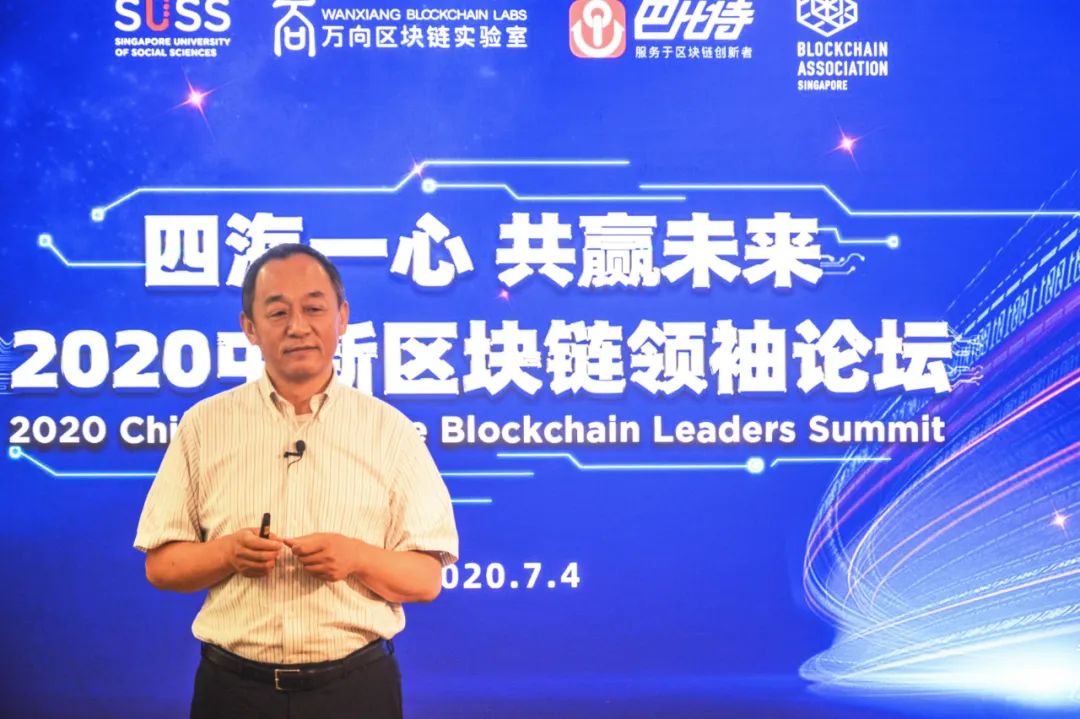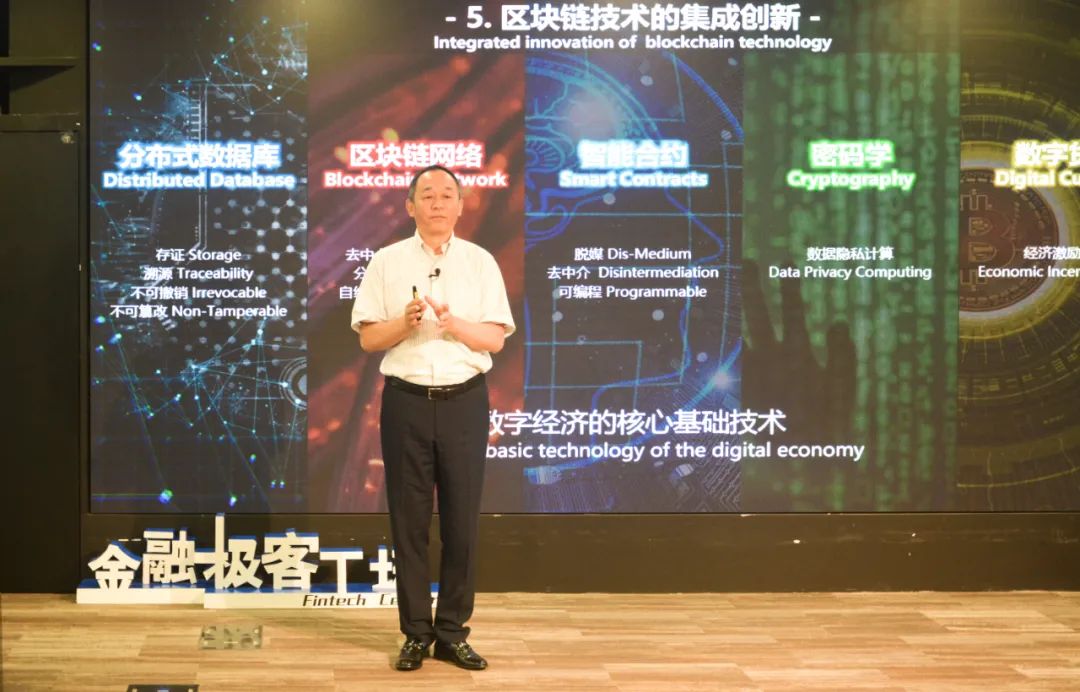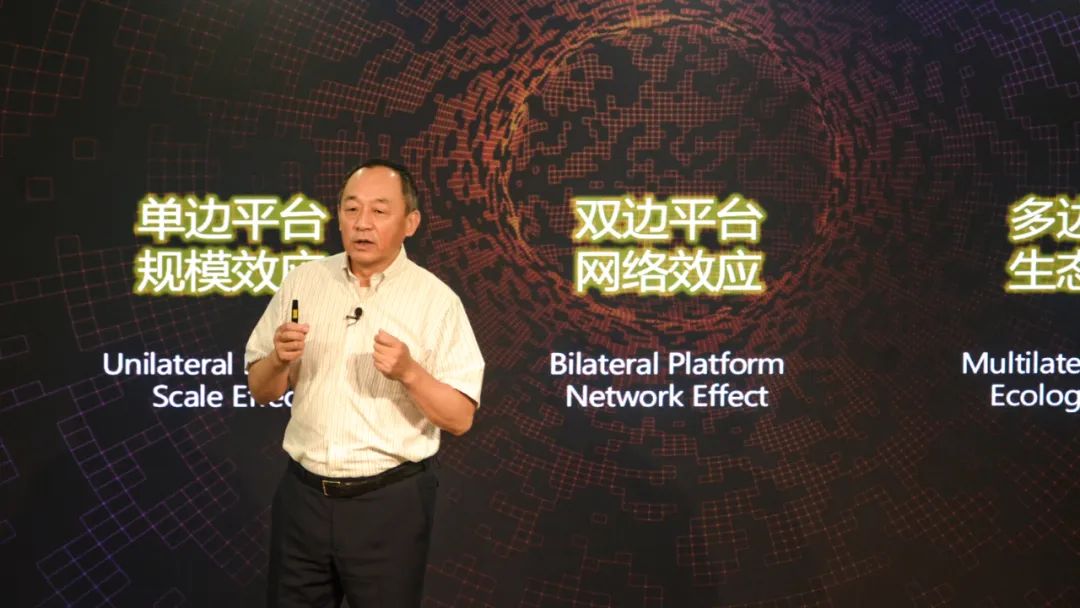On July 4, 2020, the 2020 China-Singapore Blockchain Leaders Forum, jointly initiated by Wanxiang Blockchain Lab, Singapore University of Social Sciences and 8btc, was broadcast live simultaneously in China and Singapore. The forum invited outstanding experts, scholars and entrepreneurs from the blockchain industry in China and Singapore to interpret hot issues in the industry, share the latest information, and build a bridge for communication and exchange between the blockchain industries of the two countries.
At the forum, Dr. Xiao Feng, Chairman and General Manager of Wanxiang Blockchain, delivered a keynote speech entitled "What is the Application Value of Blockchain?" The full text is as follows:

Hello, everyone! I am very glad that the 2020 China-Singapore Blockchain Leaders Forum can be successfully held today. As one of the organizers, I welcome all the guests on behalf of Wanxiang Blockchain. Today, I want to share with you what is the application value of blockchain?
As we enter 2020, the application of blockchain is in full swing. However, how to use blockchain? How to maximize the value of blockchain? It has become a hot topic of discussion recently. To understand the application value of blockchain, it is best to put it in the long river of history and compare it with other technologies. Therefore, let's first review the development of basic technology in the past 100 years.
At the end of the 19th century, great inventors such as Edison, Nikola Tesla, and Marconi invented electricity, telegraph, telephone, and wireless communication. The invention of these new technologies all appeared in the United States. At the end of the 19th century, the United States was able to establish its position as the world's economic hegemon, which had a lot to do with its leading invention, creation, and innovation of communication technology and electrification technology.
These communication technologies and electrification technologies are what we usually call "CT technologies". Communication technologies include electricity, telephone, telegraph, wireless communications, and mobile communications (such as 5G) that continue to this day.
In the 1970s and 1980s, a new round of revolution in basic technology occurred again. This technological revolution is called the information technology revolution. That is, the gradual development of IT technology, which includes computers, operating systems, software tools, the Internet, the Internet of Things, etc.
At the beginning of this century, the third iteration of basic technology has taken place. We call this round of new technology innovation "digital technology" innovation. The innovation of digital technology includes what we are going to discuss today, such as blockchain, cloud computing, artificial intelligence, cryptographic encryption algorithms, genetic engineering, etc. I personally classify these as digital technologies.

In the past 100 years, basic technology has undergone three iterations of innovation. With the innovation and development of basic technology, the industrial structure has also undergone three major upgrades.
At the end of the 19th century, with the development of "CT technology", the world entered the era of electrification under the leadership of the United States. Many famous companies were born in that period, such as GE, IBM, and the previously famous AT&T. Entering the last century, based on the information technology revolution, the industrial structure was upgraded for the second time. During this period, a number of star companies based on information technology were born, such as IBM, Microsoft and Intel.
At the beginning of this century, as basic technology evolved from information technology to digital technology, some star companies were born, such as Google, Tesla, etc. Of course, there is another company that has become a star company in the information technology era - Microsoft.
This is the upgrade and change of industrial structure brought about by the invention and creation of basic technologies over the past century. In the process of leapfrogging the industrial structure, what kind of ups and downs did the enterprises experience?
In the previous three stages, we selected four representative companies.
The first company is GE. GE's market value has dropped from more than 600 billion at its peak to tens of billions of dollars now. A closer look will reveal that GE has not been able to successfully upgrade its core business foundation in the 1970s. It has always remained in the era of electrification.
Under pressure from Wall Street, what strategies did Jack Welch adopt after taking over as CEO? First, adopt refined management. Use refined management such as 6 Sigma to squeeze marginal efficiency. Second, take the path of industrial finance. When Jack Welch left the CEO position, more than half of GE's profits came from financial business, not the original core industry. The 2008 financial crisis thoroughly exposed its infrastructure problems. The core business foundation failed to be successfully upgraded to information technology, which was the core problem of GE's business difficulties.
The second company is IBM. There is a book called "Who Says Elephants Can't Dance?" This book describes how a company that was founded in the 19th century successfully upgraded its core business based on electrification technology to a business based on information technology in the 1970s and 1980s. The "elephant" learned to dance, which means that its upgrade was successful. In the information age, IBM has successfully resumed its glory.
The third company is Microsoft. Microsoft is a typical star company in the information technology era. After entering this century, Microsoft also encountered operational difficulties. Bill Gates retired at this time. The new Microsoft management team, which is very familiar with digital technology and the new era, successfully led the company to glory and smoothly upgraded to the digital era. Microsoft's market value has also increased from the lowest point of 300 billion US dollars to the current 1.3 trillion US dollars.
As for IBM, which we just talked about, in the past decade or so, its business operations have not had many highlights, its performance has been very poor, and its market value has also fallen sharply. But just this year (2020), IBM also updated its management team and spent a lot of money to acquire an open source software company last year. (This may mean) IBM has also made up its mind to start its transformation in the digital age.
It is hard to imagine that in the digital age, you would package some artificial intelligence algorithms into hardware and sell them to your customers. Everyone uses the cloud and API to provide algorithm services. But IBM once made its artificial intelligence algorithm into a machine called Watson. Using hardware to sell one's own algorithm capabilities is a product of the information age. In the digital age, companies need to provide cloud services. No matter how good the algorithm capabilities are, they should be used by others through APIs, rather than recreating a machine in a house and providing services through the machine. This is a very typical practice in the information age. IBM brought this practice to the digital age, and I think this is a very important ideological reason for its poor performance in the past decade.
The fourth company is Tesla. Tesla is a new species born in the digital age, just like Microsoft was born in the information technology age. As of today (July 4, 2020), Tesla's market value has exceeded 200 billion US dollars, exceeding the total market value of five or six traditional automobile companies combined.
Based on the changes in basic technology, industrial structure, and business organizations over the past 100 years, we have come to a preliminary conclusion:
Any changes in technology, industry, or enterprise must keep a close eye on the changes and iterative development of basic technology. You must upgrade and iterate your industry, business, and products based on basic technology.
Let's go back to blockchain technology and blockchain applications. Blockchain is the core basic technology of the digital economy. How can we use blockchain to upgrade our industrial structure? Or iterate our business model?

There are two "roads".
The first "path" is reconstruction or innovation.
Here are two very typical representatives.
One is Tesla, which reconstructed the automobile. It used a whole set of digital technologies to completely reconstruct the automobile industry, the most typical and brilliant achievement of the Industrial Revolution. Cars have always existed, but the way of making them has changed. Traditional cars have 30,000 parts, while electric cars only need more than 3,000 parts. The physical structure of electric cars looks simple, and the most valuable part is the software, such as its automatic driving system. This is a typical case of reconstructing tradition. Many great achievements in the Industrial Revolution and industrial economy need to be reconstructed.
Another one is Ethereum. It is a complete innovation that maximizes the value of blockchain as a digital technology.
The second "path" is continuation or improvement.
Continuing the old industry, or improving the old industry and old structure. There are many examples of such improvements. For example, using blockchain for evidence storage and traceability is an improvement and improvement of the marginal effect of traditional industries, but it is not a revolution. Some people also use blockchain for supply chain management, which is also an improvement. The improvement of traditional things will increase the marginal effect, but it will not bring about subversive and explosive growth in value.
Therefore, as a basic technology, if blockchain is to be truly applied and maximize its value in applications, it must undergo an integrated innovation of various technologies.
Using blockchain for evidence storage and tracing basically uses the distributed database inside the blockchain; if you build a more decentralized business organization, then you use the P2P network; if you use the programmability of disintermediation in this business, then you use smart contracts; if data privacy calculations are involved in the business process, then cryptography is used and some cryptography technologies are integrated. Finally, if you also use economic models and incentive models in innovative business, then you use digital currency and many other technologies in it.
Blockchain is a very core basic technology of the digital economy. If you want to maximize its value, you need integrated innovation, rather than just focusing on one of its features and doing things based on that one feature.
In addition to integrated innovation in the field of blockchain technology, you also need to integrate many other digital technologies to truly build a new digital economy and a new business model. Only by integrating many new technologies can we get a lot of new and valuable business models in the field of innovative digital economy. For example, the Internet and the Internet of Things enable you to collect massive amounts of data at a very low cost, and more data creates value; cloud computing allows you to store and calculate these massive amounts of data very conveniently and at a low cost; if the data occurs on the blockchain, (everyone) does not need a third-party trust agency to trust these massive amounts of data at a very low cost; cryptography and privacy computing algorithms can protect these private data very well; finally, use artificial intelligence and a variety of application algorithms to analyze and use these data.
The digital economy was born from the integrated innovation of these digital technologies.
Finally, let’s return to the topic: What is the greatest value of blockchain applications? It is not in evidence storage or supply chain finance, but in restructuring or innovating production relations. To restructure and innovate production relations, we need to integrate technologies such as smart contracts, privacy computing, and artificial intelligence.
Looking at business from the perspective of the platform, it can be summarized into three models.
The first is the typical model under the Industrial Revolution, or the most typical model in the era of electrification, that is, the unilateral platform. Produce a product and face customers through a one-way sales channel, hoping to standardize as much as possible and sell a product to as many customers as possible. The unilateral platform era pursues economies of scale.
The second type is a two-sided platform. It is a product of the information age. Uber and Didi are the most typical two-sided platforms. Two-sided platforms can bring network effects to businesses.
The third type is a multilateral platform. Entering the digital age, with the support of a series of digital technologies, we have moved from a "bilateral platform" business to a "multilateral platform". The participants are very broad, and they may not have any relationship with each other, but everyone participates in it together like building an ecosystem.
The final commercial effect that a multilateral platform can achieve is an ecosystem. Therefore, the scale effect is superimposed on the network effect, and finally on the ecosystem effect. The real ecosystem effect is the one that can be endless and continuous, and is the most vital business model. This requires a multilateral platform to achieve, and the blockchain is a tool that allows all stakeholders to achieve cooperation very smoothly and at a very low cost, thereby creating an ecological effect and restructuring or reconstructing production relations. This is where the greatest value lies in the application of blockchain.
This is the end of my sharing today, thank you everyone.
















